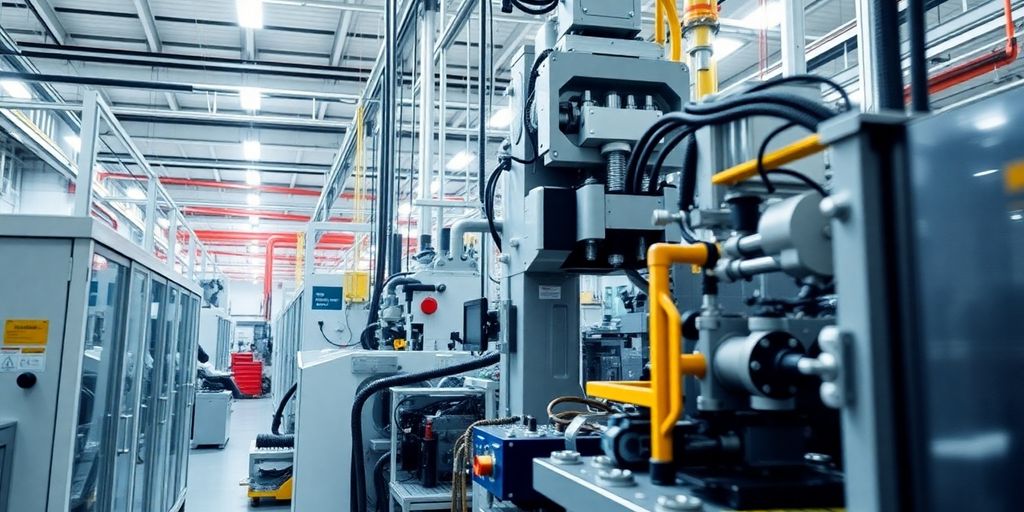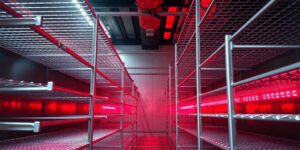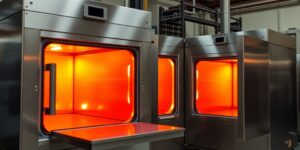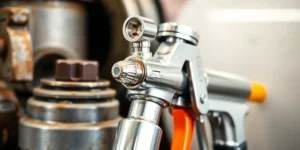You know, it’s pretty cool to think about how things are made, especially when it’s right here in our own backyard. Our facility in Fenton, Missouri, is a great example of that. They really focus on making sure the steel they produce is top-notch, from the very beginning with the raw materials all the way through to when the finished product is ready to go. It’s all about keeping a close eye on things at every step, which is why we’re talking about how they control quality from the steel itself to the final startup.
Key Takeaways
- Our Fenton facility starts with the basics, using electric arc furnaces to turn raw materials into quality steel.
- They pay close attention to refining the steel and use ladle furnaces to keep the quality high.
- Precision is key on the casting floor and when handling molten iron, with careful furnace operations.
- Advanced methods like special injection practices help improve the steelmaking process.
- Quality checks happen all through the process, including managing waste and making sure the final product is solid.
From Raw Material to Refined Steel: The Missouri Foundation
Our process starts with the very basics, turning raw materials into the high-quality steel that forms the backbone of countless products. It’s a journey that begins with careful selection and processing, setting the stage for everything that follows. We’re talking about the initial transformation, where the foundation of our steel’s integrity is laid right here in Missouri.
Electric Arc Furnace Steelmaking
The electric arc furnace, or EAF, is where much of the magic happens. It’s a powerful tool that uses electricity to melt down scrap steel and other metallic inputs. This method is pretty efficient and allows for a lot of control over the initial melt. The EAF process is a cornerstone of modern steel production, especially for its ability to recycle steel efficiently. We use it to get our raw steel to the right starting point, making sure the chemistry is on the right track from the very beginning. It’s a bit like getting the ingredients prepped before you start cooking a complex meal.
Understanding Steel Refining Processes
Once we have our molten steel from the EAF, it’s not quite ready for prime time. It needs further refinement to remove impurities and adjust its composition. This is where we focus on processes that clean up the steel, like removing unwanted elements such as sulfur and phosphorus. We also work on controlling the levels of carbon and other alloying elements. Think of it as fine-tuning an instrument to get the perfect sound. Getting these details right is important for the final properties of the steel, influencing everything from its strength to its ductility. We pay close attention to the details of these refining steps.
The Role of Ladle Furnaces in Quality Control
Ladle furnaces play a big part in our quality control. After the initial melting and refining, the molten steel is transferred to a ladle. The ladle furnace then acts as a holding and further treatment vessel. Here, we can precisely control the temperature and make final adjustments to the steel’s chemistry. It’s also a key stage for removing nonmetallic inclusions, which are tiny impurities that can weaken the steel. By managing the time and conditions in the ladle furnace, we can help ensure that these inclusions are either removed or made smaller and less harmful. This step is vital for meeting strict specifications and producing steel that performs reliably. We’ve seen how refining time can really impact the final product, and the ladle furnace is central to that understanding steel refining processes.
Precision in Every Pour: Ensuring Quality in Missouri

Our Fenton facility takes a hands-on approach to steel production, focusing on accuracy at every stage. From the moment molten metal is ready, we’re watching it closely. This attention to detail is what separates good steel from great steel, and it’s a core part of our operation here in Missouri.
Casting Floor Operations
On the casting floor, the transformation from liquid to solid steel happens. We manage the flow of molten steel into molds with great care. This process requires precise control over cooling rates to get the right internal structure. Our team monitors every pour to prevent defects and guarantee uniformity. We use specialized equipment to handle the intense heat and ensure the safety of our workers. It’s a demanding environment, but one where precision is key.
Molten Iron Handling and Transport
Moving molten iron is a critical step. We use robust, specially designed ladles and transfer cars to transport this superheated material safely and efficiently. The temperature and composition of the iron must be maintained during transport to avoid any negative impact on the final product. We have strict protocols for how this is done, covering everything from the ladle’s condition to the route it takes. This careful handling is a big part of what makes our steel reliable.
Furnace Operations and Temperature Control
Controlling the temperature within our furnaces is non-negotiable. We use advanced sensors and control systems to keep the molten steel within very tight temperature ranges. This isn’t just about efficiency; it’s about the metallurgical properties of the steel. Slight variations can affect strength, ductility, and other important characteristics. Our operators are trained to manage these complex systems, making adjustments as needed to meet exact specifications. This level of control is what allows us to produce high-quality steel consistently. You can find more about industrial finishing systems and their controls on pages like this.
Maintaining exact temperatures during steel processing is like a delicate dance. Too hot, and you risk unwanted reactions or structural changes. Too cool, and the metal might not flow correctly or solidify as intended. It’s a constant balancing act that requires deep knowledge and precise equipment.
Advanced Manufacturing Techniques for Missouri Steel
Our Fenton facility doesn’t just make steel; we engineer it. We use some pretty neat manufacturing techniques to make sure our product is top-notch. It’s all about being smart with how we do things, from the moment the raw materials come in until the final product is ready to go.
High Productivity Injection Practices
We’re always looking for ways to speed things up and use materials more efficiently. One way we do this is through advanced injection practices. Think of it like adding ingredients to a recipe at just the right time and in the right way to get the best flavor. In steelmaking, this means injecting specific elements into the molten metal at precise moments. This helps us control the steel’s composition and properties more effectively. It’s a bit like how some places use natural gas injection to boost furnace output, making the whole process run smoother and faster. We’ve adopted similar methods to get more done with less.
Furnace Process Control
Controlling the furnace is where the real magic happens. We use sophisticated systems to keep a close eye on everything. This includes monitoring temperatures, chemical reactions, and the flow of materials. It’s not just about turning knobs; it’s about using data to make smart decisions. We have systems that help our operators understand all the signals coming from the furnace, giving them advice based on current procedures. This helps us make sure we’re always producing consistent, high-quality steel. It’s a complex dance of chemistry and engineering, and our team is really good at it. We’ve seen how advanced instrumentation and data logging can make a big difference in providing a steady supply of good metal.
Developing High-Strength Steels
We’re also at the forefront of creating new types of steel. This includes developing low-carbon bainitic steels that are both strong and tough. These steels are interesting because they can replace older, heavier materials in many applications. We experiment with different alloying elements and heat treatments to get the best combination of properties. For example, we’ve looked into how different austenitization durations affect the final steel. Shortening these times can actually improve properties like hardness and tensile strength without hurting ductility. It’s about finding that sweet spot through careful research and development, pushing the boundaries of what steel can do. We’re proud to be part of the innovation happening right here in Missouri.
Quality Assurance Throughout the Steel Lifecycle
Keeping tabs on quality from start to finish is a big deal in making steel. It’s not just about the final product; it’s about every step along the way. We’re talking about making sure the raw materials are right, the melting process is controlled, and even how we handle the waste products. It’s a whole system designed to make sure what leaves our facility is top-notch.
Controlling Nonmetallic Inclusions
Nonmetallic inclusions are basically tiny bits of stuff in the steel that aren’t supposed to be there, like oxides or sulfides. They can really mess with the steel’s strength and how it performs. We watch these closely. Think of it like this: if you’re baking a cake, you don’t want bits of eggshell in there, right? Same idea, but with molten metal. We use specific treatments and filtration methods to get rid of these unwanted bits. It’s a pretty detailed process, and getting it right means the steel will be much more reliable for whatever it’s used for. We aim for really low levels of these inclusions, which is a mark of good quality steel.
Recycling and Waste Slag Management
Recycling is a huge part of what we do, and that includes managing the byproducts, like slag. Slag is what’s left over after the impurities are removed from the molten metal. Instead of just tossing it, we look for ways to reuse it. Sometimes it can be used in construction materials, like for roads. This not only cuts down on waste but also turns a byproduct into something useful. It’s all part of being responsible and trying to make the whole process more efficient. We’re always looking for better ways to handle these materials, and it’s a key part of our sustainability efforts.
Ensuring Material Integrity from Startup
From the very first bit of material we put into the furnace to the final product that ships out, we’re checking for integrity. This means making sure the steel has the right chemical makeup, the right physical properties, and no hidden flaws. We do a lot of testing at different stages. It’s like building something complex; you check each piece as you go. This way, if something’s not quite right, we catch it early and fix it. It’s this constant attention to detail that builds confidence in the final product and makes sure it’s ready for whatever job it needs to do, right from the start.
Made in Missouri: A Commitment to Excellence

The Importance of Local Manufacturing
Producing steel right here in Missouri isn’t just about making metal; it’s about building a strong local economy and creating jobs that support our communities. When we manufacture here, we keep resources and opportunities within the state. This local focus means we can keep a closer eye on every step of the process, from the initial raw materials to the final product. It allows for quicker adjustments and a more direct connection between our team and the quality of the steel we produce. This hands-on approach is what truly sets our Missouri-made steel apart.
Missouri’s Role in Steel Innovation
Missouri has a long history with steel, and our facility is part of that ongoing story. We’re not just following old methods; we’re actively looking for ways to improve. This includes exploring new ways to make steel stronger and more efficient to produce. For instance, developing new types of steel, like those with fine-grained, low-carbon bainitic structures, offers better strength and toughness. These advancements mean our steel can be used in more demanding applications, pushing the boundaries of what’s possible in construction and manufacturing. We’re proud to contribute to this evolution of steelmaking.
Building Quality from the Ground Up
Our commitment to quality starts the moment raw materials arrive and continues through every stage of production. We pay close attention to details like controlling nonmetallic inclusions, which can affect the steel’s properties. Managing these tiny particles is a big part of getting the final product right. We also focus on responsible practices, such as recycling and managing waste slag effectively. This holistic view means we’re building quality into the steel from the very beginning, aiming for material integrity that our customers can rely on. It’s about making sure every piece of steel meets high standards, ready for whatever job it’s needed for. We work with partners who understand the importance of quality systems, like those at GAT Finishing Systems.
Our “Made in Missouri” promise means we’re dedicated to top-notch quality. We build great finishing systems right here. Want to see how we can help your business shine? Check out our website to learn more!
Ensuring Quality, From Start to Finish
So, that’s a look at how our Fenton facility keeps a close eye on things. It’s not just about making steel; it’s about making it right, every single time. From the moment the raw materials come in, through all the melting and shaping, and all the way to when the finished product leaves, there are checks and balances. This careful approach means we can stand behind the quality of what we produce. It’s a lot of work, sure, but it’s how we build trust and make sure our customers get exactly what they need.
Frequently Asked Questions
How do you start making steel at your Fenton plant?
Our Fenton facility starts with raw steel materials. We use an electric arc furnace, which is a lot like a giant, super-hot oven, to melt down scrap metal. Then, we carefully refine this molten metal using special processes, like in a ladle furnace, to get rid of impurities and make the steel just right.
What happens on the casting floor to ensure good quality?
Quality is super important to us! On the casting floor, we carefully pour the hot, liquid steel into molds. We keep a close eye on the temperature of the molten iron and how it’s handled to make sure it’s perfect before it becomes solid steel.
What advanced methods do you use in your steelmaking?
We use advanced machines and techniques. For example, we have special ways to add materials into the furnace to make the process faster and better. We also have smart systems that help control the furnace precisely, and we’re always working on new ways to make stronger steel.
How do you check the quality of the steel all the way through?
We watch over the steel from beginning to end. This includes checking for tiny, unwanted bits called nonmetallic inclusions, which can weaken the steel. We also manage our waste, like slag, responsibly. Our goal is to make sure the steel is strong and reliable right from the start.
Why is it important that your facility is in Missouri?
Making things right here in Missouri is a big deal for us. It means we can keep a close watch on everything and support our local community. We believe that by focusing on quality from the very beginning, we build the best steel possible.
How do you handle waste and keep the steel clean?
We make sure the steel is clean by removing bad stuff during the refining process. We also recycle materials like slag, which is a leftover from making steel, so we don’t waste as much. This helps us make good quality steel while being good to the environment.





